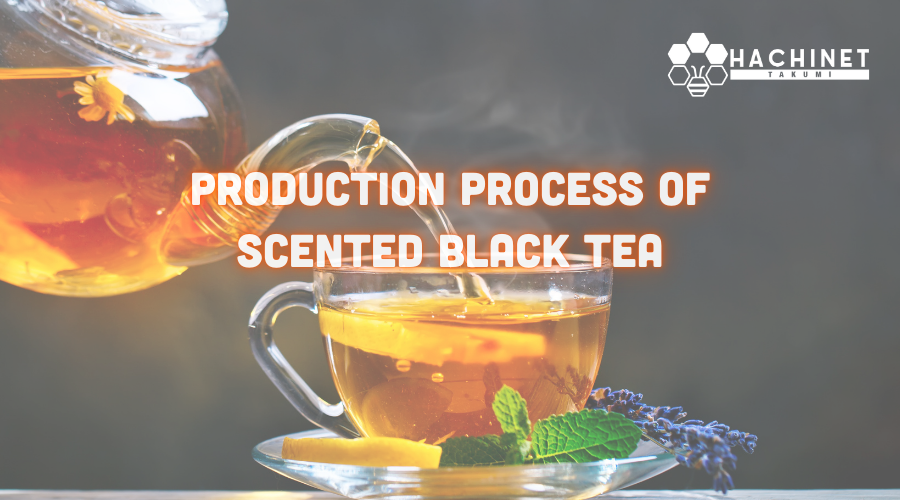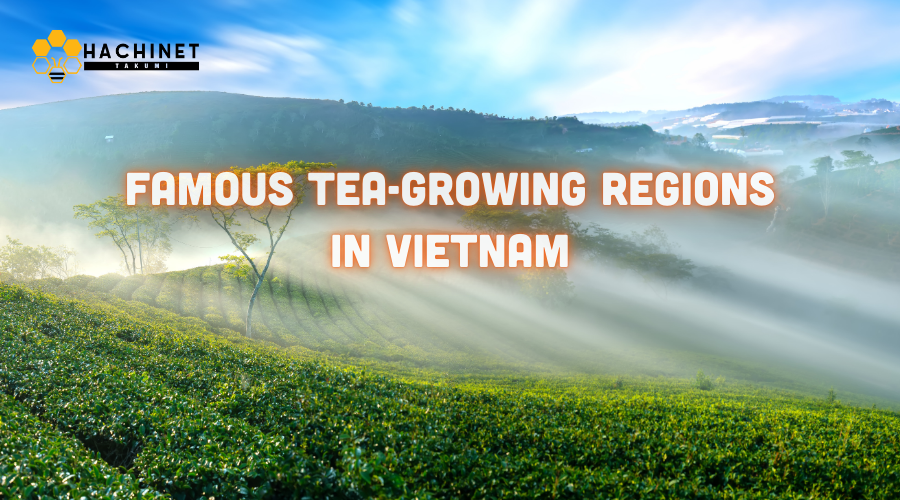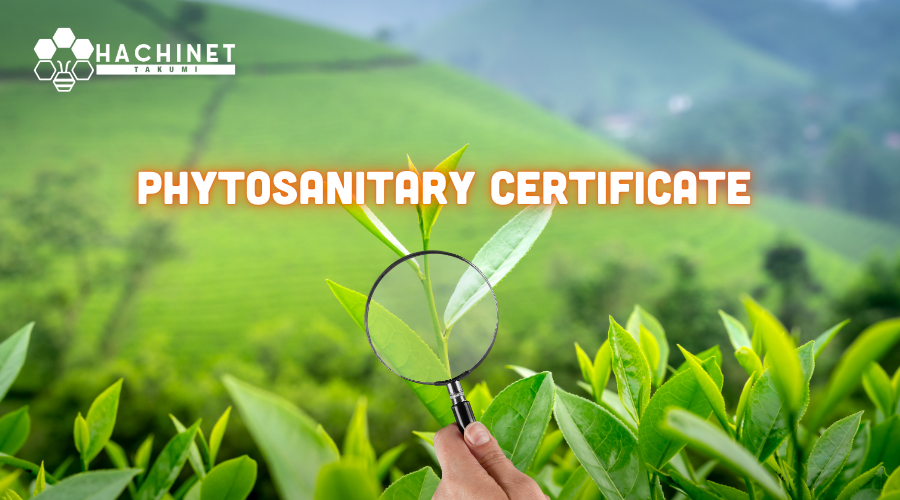Vietnam is renowned for its tea-growing regions,
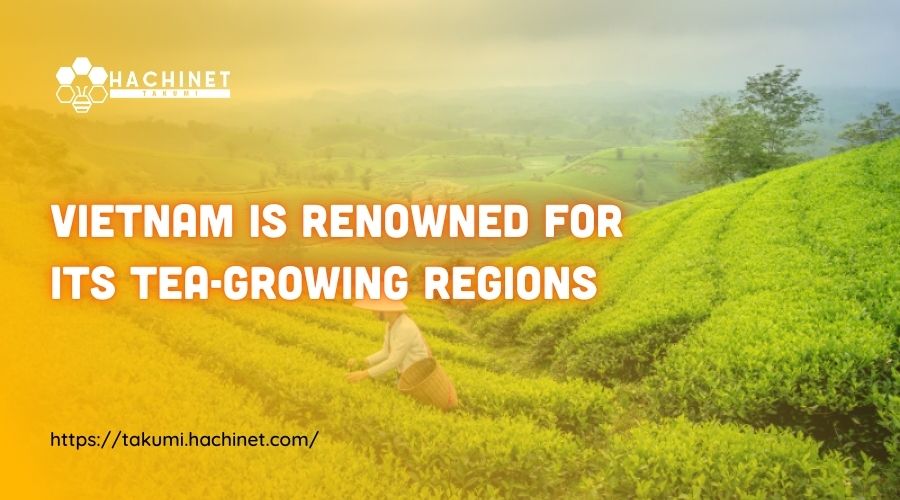
benefiting from fertile soil and a suitable climate for cultivating Camellia sinensis, the tea plant. These regions not only produce tea, a popular beverage worldwide, but also contribute significantly to the economy and livelihoods of many families. Here are some notable tea-growing regions across Vietnam:
Vietnam, with its favorable soil conditions and climate, is well-suited for cultivating tea plants. Many regions across the country are renowned for their expansive tea plantations. Yêu Trà Việt would like to share with tea enthusiasts some information about the tea-growing regions in Vietnam.
General Overview of Tea Regions in Vietnam Tea plants, scientifically known as "Camellia sinensis," are used for producing the famous beverage tea. In Vietnam, tea is a high-value agricultural crop. Tea plants thrive in cool climates, making highlands and mountainous regions ideal for cultivation.
Tea is not only a beverage but also an essential herbal ingredient that contributes to the livelihoods of many households. Due to its economic importance, the tea cultivation area in Vietnam significantly expanded in 2020, establishing well-known brands both domestically and internationally.
Northern and Northwestern Vietnam are the primary regions with extensive tea cultivation. Additionally, the Central Highlands and Lâm Đồng are famous for their excellent teas. Alongside planned development areas, some regions cultivate wild tea plants, renowned for their unique flavors in provinces such as Điện Biên, Sơn La, Lai Châu, Lào Cai, Yên Bái, and Hà Giang.
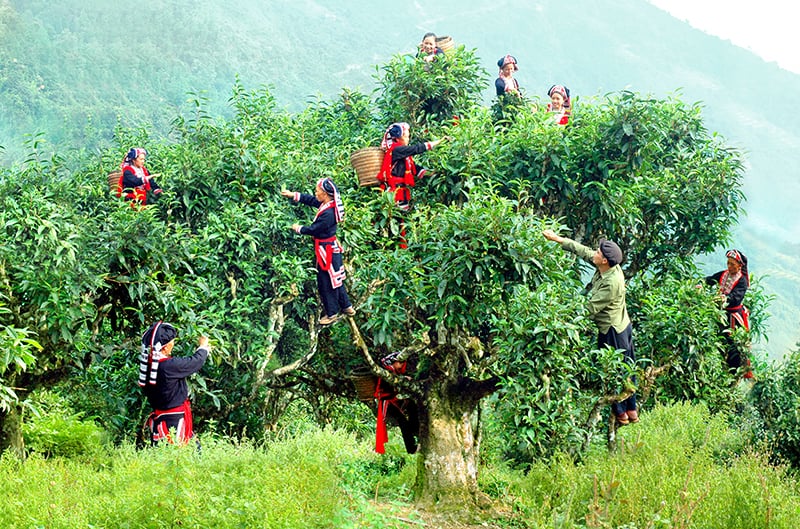
These tea regions have produced high-quality tea products, placing Vietnam among the top exporters of tea worldwide.
Tea Regions in Northwestern Vietnam In the northern mountainous regions, tea is cultivated in provinces such as Cao Bằng, Lào Cai, Yên Bái, Sơn La, Hà Giang, and Lạng Sơn.
Sơn La has an area of 1,900 hectares, while Lai Châu covers 590 hectares, primarily planted with Shan Tuyết tea varieties. Hà Giang boasts the largest area of Shan tea in the country, approximately 18,726.3 hectares out of a total tea-growing area of 20,646.41 hectares in the province. Lào Cai has a total tea area of 6,106.5 hectares, with Shan tea comprising over 58.78% (3,589.3 hectares)...
Shan Tuyết tea, a native ancient variety Shan Tuyết tea is considered a specialty of the northern mountainous provinces such as Sơn La, Lai Châu, Yên Bái, and Hà Giang. It is not only renowned in Vietnam but also recognized in many countries worldwide. Particularly, Shan Tuyết tea grows at an altitude of 1,500 to 1,800 meters above sea level. With a mild climate, it nurtures tens of thousands of ancient tea trees over 100 years old, including some over a thousand years old, making them among the oldest tea trees globally.
Local residents are harvesting Shan tea Recognizing the economic potential of this longstanding industrial crop, local residents emphasize agricultural development. Many tea production facilities have been established, investing in high-quality technical materials. This initiative creates employment opportunities for people in these highland areas, gradually improving their livelihoods. Shan Tuyết tea has significantly contributed to boosting the local economy. High-quality Shan Tuyết tea products not only attract domestic markets but also confidently compete in the international tea market.
Tea Regions in the Northern Midlands and Tuyên Quang A prominent example is Thái Nguyên province, ranking second nationwide with 18,000 hectares. With over 20,000 hectares, Thái Nguyên leads the country in terms of tea cultivation area, quantity, and quality of tea products. For many years, local residents have built a strong brand "Thái tea" through high-quality and food safety standards: Tân Cương, Đồng Hỷ, La Bằng... gradually winning over consumers both domestically and internationally.
Local residents are harvesting tea on hills in Thái Nguyên. In Tuyên Quang, there are over 8,700 hectares of tea. Tea is identified as a spearhead crop in the province, helping local households sustainably eliminate poverty. It is being implemented with a focus on tea cultivation, production, and processing techniques that ensure food safety and hygiene...
The poetic beauty from above the tea hills in Long Cốc - Phú Thọ
Tea Regions in Central Vietnam With a total area of over 15,000 hectares, tea production primarily concentrates in provinces such as Quảng Nam, Nghệ An, Hà Tĩnh, and Thanh Hóa, affirming the significant potential of Central Vietnam provinces. Efficient land fund utilization has gradually expanded the area, improving productivity, product quality, and sustainable development, creating employment opportunities and increasing income for tea growers.
Tea hills in Thanh Chương, Nghệ An, with many tourism activities
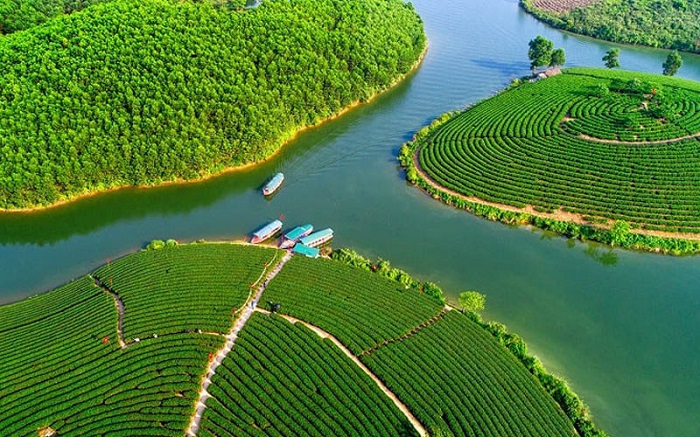
Tea has been identified as one of the ten key crops in Nghệ An. It contributes to the economic value and is one of the export items that bring foreign currency to Nghệ An province. Nghệ An tea products are gradually establishing a strong brand, securing a solid position in the industry. They have also conquered some markets worldwide such as Middle Eastern countries, the EU, ASEAN, the US, and Russia...
Tea Regions in the Central Highlands Tea is thriving in Lâm Đồng province, covering nearly 23,900 hectares, accounting for 19% of the total tea area in the country.
Bảo Lộc, Lâm Đồng, is naturally favored for tea growth. The soil and climate conditions are highly conducive, making it the most important tea region in Vietnam. It is characterized by traditional flower-infused teas such as Lài tea, Sen tea, Sâm Dứa tea, and high-quality green tea plantations of Ô Long...
Bảo Lộc Lâm Đồng tea hills at sunrise

It can be seen that the tea cultivation area in Vietnam has significantly expanded, yielding higher productivity. This opens up a promising future for the Vietnamese tea industry. Vietnamese tea products not only meet the domestic consumption market but also have the potential to penetrate deeper into the global tea market map.
The above information outlines the distribution of tea regions in Vietnam. If you are passionate about experiencing tea culture, consider enjoying these delicious teas. Yêu Trà Việt hopes to provide valuable information to tea enthusiasts.
Each tea product carries within it the entire process from tea plants to tea tables. Tea enthusiasts aspire to enjoy the delicious flavors of ancient Shan Tuyết tea. Contact Tiên Thiên Trà now to experience tea products from the mountainous forests of Northwestern Vietnam.





